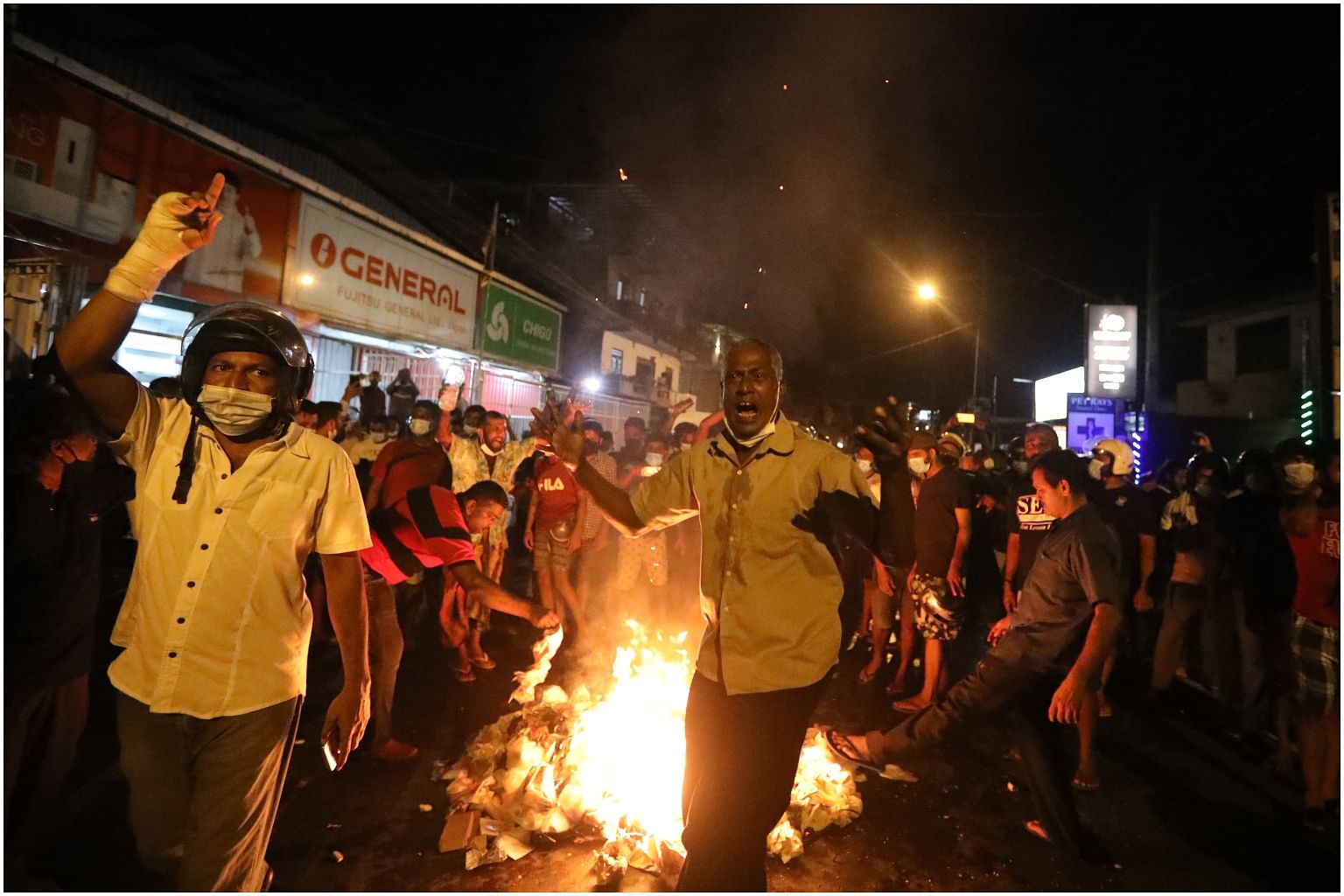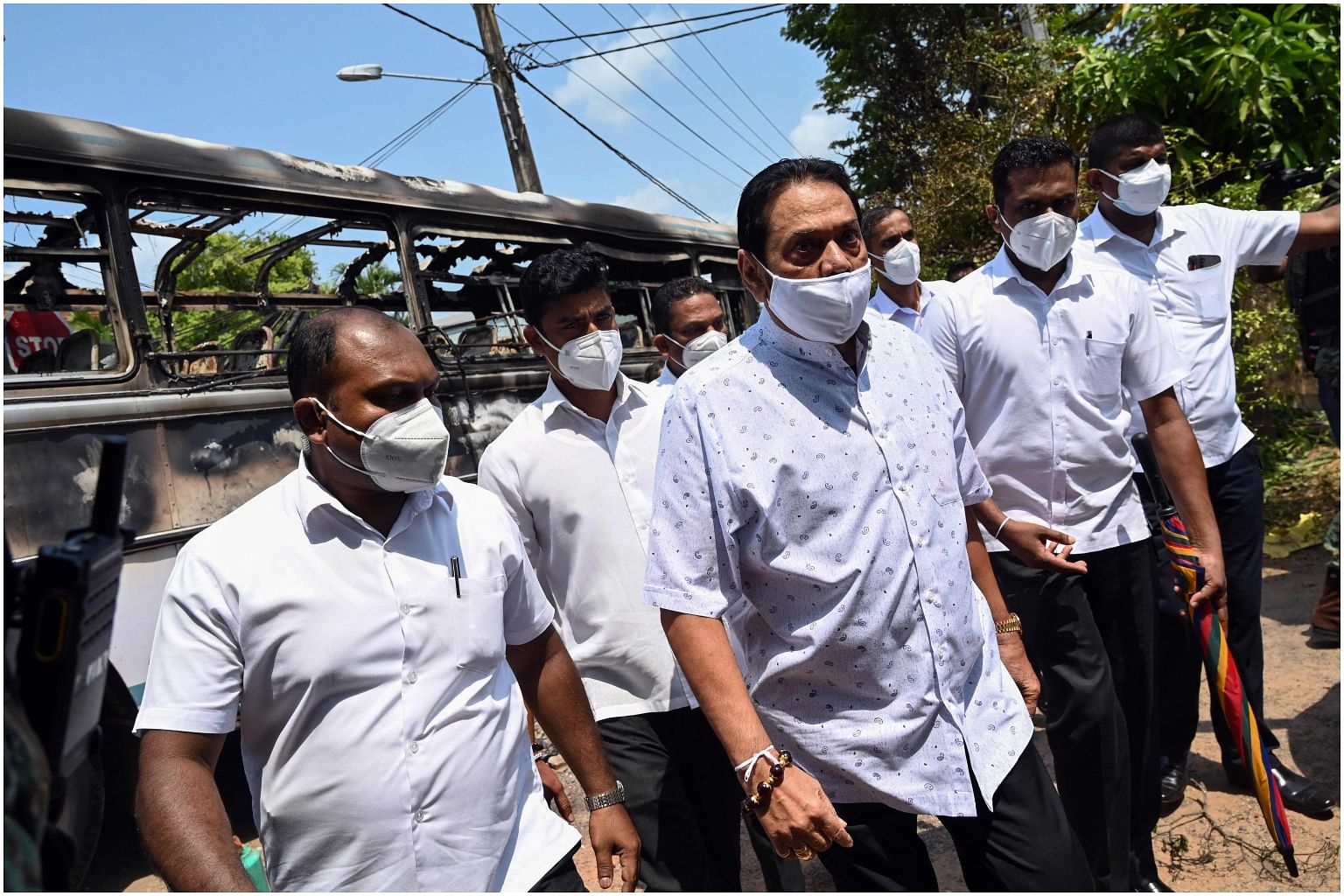Sri Lanka deploys troops after state of emergency is declared
Sign up now: Get insights on Asia's fast-moving developments
Follow topic:
BANGALORE - Sri Lanka on Saturday (April 2) deployed troops armed with sweeping powers to detain suspects, hours after President Gotabaya Rajapaksa declared a state of emergency to deal with mounting anger over the country’s economic crisis.
Even as citizens gathered outside the Nelum Pokuna Mahinda Rajapaksa Theatre on Saturday evening in capital Colombo, protesting against the government’s handling of the crisis, police announced a 36-hour curfew that will last till 6am on Monday.
Mr Rajapaksa, in an order late on Friday, said the state of emergency was necessary to ensure public order and to maintain essential supplies and services.
The military can now arrest and indefinitely detain any suspects without warrants, presumption of innocence or proof of crimes.
Political observers, however, said the use of a draconian law to detain people is a disproportionate response to protests that emerged from growing economic desperation across the island.
Many see it as a return to the Rajapaksa government’s old habit of abandoning democratic process at the slight hint of criticism.
Public anger against Mr Rajapaksa and his government has escalated as the South Asian country reels under rising prices, shortage of rice and medicine, and 13-hour power cuts in its worst economic crisis.
Around 2,000 angry protesters had gathered outside the President’s house in Colombo on Thursday, demanding his resignation and calling him “a lunatic”.
Local reports say the demonstrators had spontaneously gathered, unlike those in a March 15 protest led by opposition alliance Samagi Jana Balawegaya.
Placards on March 31 called Finance Minister Basil Rajapaksa, the President’s brother, “irresponsible” and “missing in action”. He has barely attended Parliament sessions since the economic crisis deepened.
This has left opposition leaders and the public in the dark about his ministry’s plan to shore up foreign currency reserves that were at a low US$734 million (S$996 million) in February. Without dollars, Sri Lanka is unable to import medicine, food and fuel.
The demonstrations were reported to be peaceful until the military police fired tear gas and water cannon.
More than 50 people were arrested and five news photographers detained. Most have received bail now, and the government said it would probe allegations of the police torturing the detainees.

In a press conference on the morning after the protests, the President’s media division said some people carrying iron bars, clubs and sticks had “provoked the protesters”, causing “a riot”.
A spokesman said many among the arrested have been identified as “organised extremists”. When asked who these people were, he called them “terrorists”.
The state of emergency severely restricts fundamental rights such as the freedoms of expression and assembly, and is meant to be deployed in situations of extreme threat, danger or disaster.
The European Union said on Twitter on Saturday: “EU strongly urges Sri Lankan authorities to safeguard democratic rights of all citizens, including right to free assembly and dissent, which has to be peaceful.”

Sri Lankan activist Ruki Fernando said: “Freedom of expression, assembly and association become even more important during a crisis. If people have no food and medicine, they need to gather and express it to get help from the government or fellow citizens.”
Ms Bhavani Fonseka, lawyer at the Centre for Policy Alternatives, said: “There is fear about police violence, and legal uncertainty about whether an emergency can deprive constitutional rights, but people are still bravely raising their concerns.”
Sri Lankan social media is buzzing with plans for peaceful protests across the country, marking a momentous turnaround for Mr Rajapaksa and his elder brother Mahinda Rajapaksa, the current prime minister and former president.
For a long time, most Sri Lankans hailed them as war heroes for rooting out separatist Tamil Tigers from the northern provinces in 2009, and ending a three-decade-long civil war.
However, journalists, human rights activists and members of the minority Tamil and Muslim communities in the predominantly Sinhalese Buddhist nation faced the brunt of the Rajapaksas’ post-war militarisation, detentions and disappearances that sought to suppress dissidents.
After 2018’s Easter Sunday bombings and the fall of another leadership in a coup, Mr Gotabaya Rajapaksa swept elections in 2019, promising stability and a strong hand to rule the country.
Padi farmer Priyanka Dissanayake, 53, from the central district of Anuradhapura, said: “I had supported the Rajapaksa brothers since 2010 because they ended an endless war in my country. But now, we are tired of their corruption and inefficiency that have driven our economy to the ground.”
Sri Lanka has sought credit lines and loans from India and China to shore up foreign exchange and import essentials.
In the first major food aid to the island, India started loading 40,000 tonnes of rice for prompt shipment on Saturday, ahead of a key festival that Sri Lanka will unfortunately mark with its lowest rice harvest in decades.

